Filter by
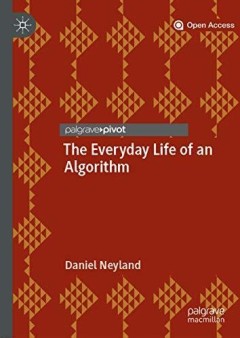
The Everyday Life of an Algorithm
This open access book begins with an algorithm–a set of IF…THEN rules used in the development of a new, ethical, video surveillance architecture for transport hubs. Readers are invited to follow the algorithm over three years, charting its everyday life. Questions of ethics, transparency, accountability and market value must be grasped by the algorithm in a series of ever more demanding for…
- Edition
- 1
- ISBN/ISSN
- 9783030005788
- Collation
- IX, 151 hlm; ill., lamp.,
- Series Title
- -
- Call Number
- -

Ecological Risk Assessment for Chlorpyrifos in Terrestrial and Aquatic System…
Introduction CONTENTS Preface Foreword by Keith Solomon and John Giesy Foreword by Coordinating Board of Editors Ecological Risk Assessment of the Uses of the Organophosphorus Insecticide Chlorpyrifos, in the United States John P. Giesy, Keith R. Solomon, G. Christopher Cutler, Jeffrey M. Giddings, Don Mackay, Dwayne Moore, John Purdy, W. Martin Williams Properties and Uses of Chlorpyrifos in t…
- Edition
- -
- ISBN/ISSN
- 9783319038650
- Collation
- XVI, 269
- Series Title
- -
- Call Number
- -

Drones and the Creative Industry :Innovative Strategies for European SMEs
This open access, interdisciplinary book presents innovative strategies in the use of civil drones in the cultural and creative industry. Specially aimed at small and medium-sized enterprises (SMEs), the book offers valuable insights from the fields of marketing, engineering, arts and management. With contributions from experts representing varied interests throughout the creative industry, inc…
- Edition
- 1
- ISBN/ISSN
- 9783319952611
- Collation
- X, 161 hlm,: ill, lamp;
- Series Title
- -
- Call Number
- -
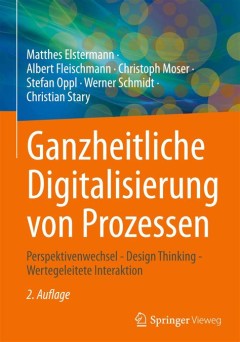
Ganzheitliche Digitalisierung von Prozessen :Perspektivenwechsel – Design T…
In diesem Open-Access-Buch wird das Geschäftsprozessmanagement als ein ganzheitlicher Prozess begriffen, der der Mitwirkung aller Stakeholder bedarf. Denn das traditionelle Business Process Engineering stößt heute angesichts der Digitalisierung und der dynamischen Entwicklung von Organisationen immer mehr an seine Grenzen, beispielsweise bezüglich Agilität. Um nun das Wesen von Aufgaben un…
- Edition
- 1
- ISBN/ISSN
- 9783658226480
- Collation
- X, 254 hlm,: ill, lamp;
- Series Title
- -
- Call Number
- -

Emerging States at Crossroads
This volume analyzes the economic, social, and political challenges that emerging states confront today. Notwithstanding the growing importance of the ‘emerging states’ in global affairs and governance, many problems requiring immediate solutions have emerged at home largely as a consequence of the rapid economic development and associated sociopolitical changes. The middle-income trap is a…
- Edition
- -
- ISBN/ISSN
- 9789811328596
- Collation
- XIII, 293, hlm,: ill, lamp;
- Series Title
- -
- Call Number
- -

Multi-dimensional Approaches Towards New Technology
This open access edited book captures the complexities and conflicts arising at the interface of intellectual property rights (IPR) and competition law. To do so, it discusses four specific themes: (a) policies governing functioning of standard setting organizations (SSOs), transparency and incentivising future innovation; (b) issue of royalties for standard essential patents (SEPs) and related…
- Edition
- 1
- ISBN/ISSN
- 9789811312311
- Collation
- XXV, 337 hlm,: ill, lamp;
- Series Title
- -
- Call Number
- -
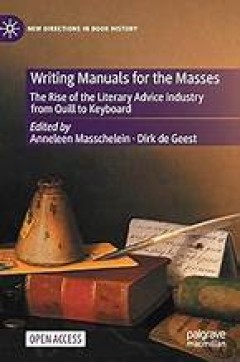
Writing Manuals for the Masses
This open access collection of essays examines the literary advice industry since its emergence in Anglo-American literary culture in the mid-nineteenth century within the context of the professionalization of the literary field and the continued debate on creative writing as art and craft. Often dismissed as commercial and stereotypical by authors and specialists alike, literary advice has non…
- Edition
- 1
- ISBN/ISSN
- 978-3-030-53614-5
- Collation
- -
- Series Title
- New Directions in Book History
- Call Number
- XXII, 412
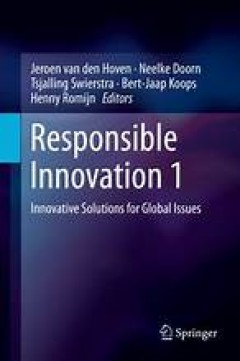
Responsible Innovation 1
This book addresses the methodological issues involved in responsible innovation and provides an overview of recent applications of multidisciplinary research. Responsible innovation involves research into the ethical and societal aspects of new technologies (e.g. ICT, nanotechnology, biotechnology and brain sciences) and of changes in technological systems (e.g. energy, transport, agriculture …
- Edition
- 1
- ISBN/ISSN
- 978-94-017-8956-1
- Collation
- -
- Series Title
- 26 b/w illustrations
- Call Number
- XXIII, 392
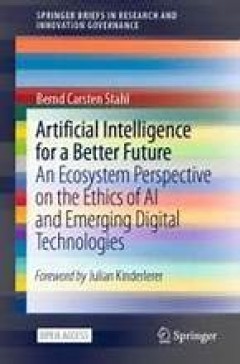
Artificial Intelligence for a Better Future
This open access book proposes a novel approach to Artificial Intelligence (AI) ethics. AI offers many advantages: better and faster medical diagnoses, improved business processes and efficiency, and the automation of boring work. But undesirable and ethically problematic consequences are possible too: biases and discrimination, breaches of privacy and security, and societal distortions such as…
- Edition
- 1
- ISBN/ISSN
- 978-3-030-69978-9
- Collation
- -
- Series Title
- SpringerBriefs in Research and Innovation Governance
- Call Number
- X, 124

Internal combustion engines and powertrain systems for future transport 2019 …
With the changing landscape of the transport sector, there are also alternative powertrain systems on offer that can run independently of or in conjunction with the internal combustion (IC) engine. This shift has actually helped the industry gain traction with the IC Engine market projected to grow at 4.67% CAGR during the forecast period 2019-2025. It continues to meet both requirements and ch…
- Edition
- -
- ISBN/ISSN
- 9781003023982
- Collation
- -
- Series Title
- -
- Call Number
- -
 Computer Science, Information & General Works
Computer Science, Information & General Works  Philosophy & Psychology
Philosophy & Psychology  Religion
Religion  Social Sciences
Social Sciences  Language
Language  Pure Science
Pure Science  Applied Sciences
Applied Sciences  Art & Recreation
Art & Recreation  Literature
Literature  History & Geography
History & Geography